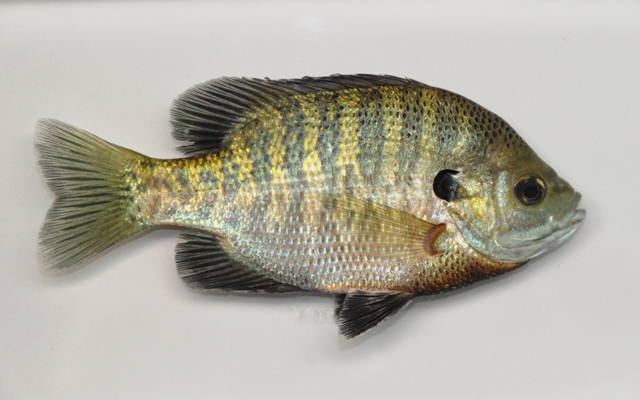An overpopulation of bluegill can occur in an pond where too few predators remain to control the bluegill population. This can happen by removing too many bass. The result is that bluegill will overpopulate the pond. When this happens, it’s time to evaluate the options for proper pond management.
In improperly managed ponds, overcrowded bluegill are often unable to find enough food and they don’t grow well. The small bass that are left in the pond are unable to compete with the bream for food, so the bass are unable to grow to a size large enough to eat the bream that are present in such high numbers. Most of the young bass are eaten when they are tiny so there are few small bass in the pond.
Under these circumstances, rarely does a bass manages to get large enough to eat the stunted bluegills. When that happens, the bass grows quickly. Bluegill crowded ponds are characterized by a large population of stunted bluegill (2 to 4 inch) with very few of harvestable size. The bass population consists primarily of a very few large individuals.
Successful bass and bluegill reproduction is greatly reduced. Summer seine hauls have very few, if any, newly hatched bass or bluegill. Ponds that are overcrowded with bluegill are difficult to correct. However, there are four potential methods of correcting this situation.
1. Harvest as many bluegill of all sizes as possible. The number needed to reduce the effects of the overcrowded situation may not be possible through fishing alone. Most pond owners will not be able to catch and remove enough of the very small 2 to 4 inch bluegill.
2. Lower the water level in the pond to about one-half the original volume. This concentrates the bluegill so that the bass can more readily eat them. This is best done in late summer or early fall. Allow the pond to refill before the following spring.
3. Stock 20 to 30 adult (8 to 12 inch) largemouth bass per acre. These adult fish will eat and help reduce the overcrowded bluegill population.
4. The methods described above are often successful in fixing an out-of-balance pond. However, they do require some work and dedication, and improvements may be slow to happen or may not happen at all. An alternative to the methods above is a complete renovation that includes draining and killing all of the fish in the pond. Once the pond has refilled, start over with stocking. This may be the best choice in cases where large numbers of unwanted species are in the pond or corrective measures do not improve the size structure of the population and return the pond to balance.
The pond management steps listed above are not extremely difficult, but they do require effort on the part of the pond owner. Keep in mind that pond management is not rocket science, but you do have to put forth the effort if you want to reap the results. Best of luck!
